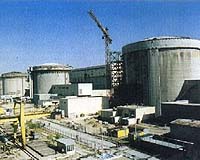 |
Pasadena CA (SPX) Apr 28, 2011 Design techniques honed at NASA's Jet Propulsion Laboratory in Pasadena, Calif., for Mars rovers were used to create the rover currently examining the inside of Japan's nuclear reactors, in areas not yet deemed safe for human crews. The iRobot PackBot employs technologies used previously in the design of "Rocky-7," which served as a terrestrial test bed at JPL for the current twin Mars rovers, Spirit and Opportunity. PackBot's structural features are modeled after Rocky-7, including the lightweight, high-torque actuators that control the rover; and its strong, lightweight frame structure and sheet-metal chassis. PackBot's other "ancestor," called Urbie, was an urban reconnaissance robot with military and disaster response applications. Urbie's lightweight structure and rugged features also made it useful in emergency response situations; for example, at sites contaminated with radiation and chemical spills, and at buildings damaged by earthquakes. Urbie's physical structure was designed by iRobot Corp., Bedford, Mass., while JPL was responsible for the intelligent robot's onboard sensors and vision algorithms, which helped the robot factor in obstacles and determine an appropriate driving path. Following the success of Urbie's milestones, the team at iRobot created its successor: PackBot. Since 2002, iRobot has delivered variations of the PackBot model to the U.S. Army, U.S. Air Force and U.S. Navy. The tactical robot's first military deployment was to Afghanistan in July 2002, to assist soldiers by providing "eyes and ears" in the most dangerous or inaccessible areas. It was also used to search through debris at Ground Zero after the Sept. 11, 2001 attacks in New York. Recently, iRobot provided two PackBots to help after the devastating March 11, 2011, earthquake and tsunami in Japan. The PackBot models, currently taking radioactivity readings in the damaged Fukushima Daiichi nuclear power plant buildings, are equipped with multiple cameras and hazard material sensors. The images and readings provided by the PackBots indicated radiation levels are still too high to allow human repair crews to safely enter the buildings.
Share This Article With Planet Earth
Related Links More information on the history of the partnership between iRobot and JPL Nuclear Power News - Nuclear Science, Nuclear Technology Powering The World in the 21st Century at Energy-Daily.com
 Romania seeks private money to build nuclear plant
Romania seeks private money to build nuclear plantBucharest (AFP) April 27, 2011 Romania wants to attract private investors to modernise its road infrastructure and to build two new reactors at the Cernavoda nuclear plant, Prime Minister Emil Boc said Wednesday. "The government wants to resort to public-private partnerships in order to launch infrastructure works not benefitting from public money or European funds," Boc told a press conference. He said the list inclu ... read more |
|
| The content herein, unless otherwise known to be public domain, are Copyright 1995-2010 - SpaceDaily. AFP and UPI Wire Stories are copyright Agence France-Presse and United Press International. ESA Portal Reports are copyright European Space Agency. All NASA sourced material is public domain. Additional copyrights may apply in whole or part to other bona fide parties. Advertising does not imply endorsement,agreement or approval of any opinions, statements or information provided by SpaceDaily on any Web page published or hosted by SpaceDaily. Privacy Statement |